Azelaic Acid 20% Cream (Generic)
Azelaic Acid 20% Cream is a topical medication used to treat acne, rosacea, and skin pigmentation issues. It helps reduce inflammation, unclog pores, and promote even skin tone for healthier-looking skin.
About Aziderm 20% Cream
Aziderm 20% Cream is used to treat acne vulgaris. It also prevents the outer layer of skin from becoming too thick, which can clog pores and lead to the formation of blackheads and whiteheads. Acne is a skin condition which occurs when the hair follicles are plugged with oil and dead skin cells. It can cause whiteheads, blackheads and pimples.
Aziderm 20% Cream contains ‘Azelaic acid,’ which is a bactericidal (kills bacteria) agent. It works by inhibiting the growth of acne-causing bacteria (Propionibacterium acnes). Aziderm 20% Cream clears the bacteria that cause irritation and breakouts. It reduces inflammation, making acne less visible, less red, and less irritated. Aziderm 20% Cream also helps the skin renew itself and reduces pimples and blackhead formation.
Common side effects of Aziderm 20% Cream include dryness, peeling, a burning sensation, and itching. These side effects may not occur in every patient using this medication and may differ individually. However, if the side effects persist longer or worsen, please seek a doctor’s advice.
If you are allergic to Aziderm 20% Cream or any other medications, inform your doctor. Consult a doctor if you are pregnant or breastfeeding. Aziderm 20% Cream is for external use only. Avoid contact with eyes, mouth, or mucous membrane; rinse with water immediately if contact occurs. Aziderm 20% Cream is not recommended for children below 12 years.
Side Effects of Aziderm 20% Cream
- Dryness
- Peeling
- Burning sensation
- Itching
Uses of Aziderm 20% Cream
Aziderm 20% Cream is used in the treatment of acne. The detailed uses of Aziderm 20% Cream are as follows:
- Treatment of acne vulgaris:Aziderm 20% Cream removes pimples, blackheads, and whiteheads by unclogging pores and decreasing skin inflammation.
- Reduction of skin redness:Calms irritated skin and reduces redness caused by acne.
- Prevention of future breakouts:Exfoliates the skin gently, removing dead cells and preventing pore blockage.
- Lightening of dark spots:Reduces acne marks and post-inflammatory hyperpigmentation, promoting an even skin tone.
- Improvement in skin texture:Enhances the regeneration of the skin, resulting in a smoother, brighter complexion.
Directions for Use
- Follow your doctor’s instructions on the dosage and timing of this medication to ensure safe and effective use.
- Take the advised amount of Aziderm 20% Cream and apply it as a thin layer on the clean and dry affected area as prescribed by your doctor.
- Aziderm 20% Cream is for external use only. Avoid contact with the eyes, ears, nose, and mouth. If Aziderm 20% Cream comes into contact with the eyes, nose, or mouth, rinse with water immediately.
Medicinal Benefits
Aziderm 20% Cream is used to treat acne by clearing pimples. It also prevents clogged pores, blackheads, and whiteheads. Aziderm 20% Cream is bactericidal and inhibits the synthesis of microbial cellular proteins. It clears the bacteria that cause irritation and breakouts. Unlike topical steroids, it can be safely used for extended periods under medical guidance.
How Aziderm 20% Cream Works
Storage
- Consult your doctor if you experience skin redness, itching, or irritation after taking medication.
- Your doctor may adjust your treatment plan by changing your medication or providing guidance on managing your erythema symptoms.
- Your doctor may recommend or prescribe certain medications to help alleviate symptoms.
- Apply cool compresses or calamine lotion to the affected skin area to reduce redness and itching.
- Stay hydrated by drinking plenty of water to help alleviate symptoms and keep your skin hydrated.
- Monitor your skin condition closely and promptly report any changes, worsening symptoms, or concerns to your healthcare provider.
- Moisturize frequently with thick, broad-spectrum moisturizers containing sunscreen.
- Use warm water for short baths, and gentle cleansers.
- Pat dry and apply moisturizer immediately.
- Use a humidifier to add moisture to the air, and choose breathable fabrics like cotton and silk.
- Wash clothes with fragrance-free detergents to minimize irritation.
- Consult your doctor if you experience skin redness, itching, or irritation after taking medication.
- Apply cool compresses or calamine lotion to the affected skin area to reduce irritation.
- Stay hydrated by drinking plenty of water to help alleviate symptoms and keep your skin soothing.
- Monitor your skin condition closely and promptly report any changes, worsening symptoms, or concerns to your healthcare provider.
- Change positions or take a break from activity to relieve symptoms.
- Avoid postures that put a lot of pressure on just one area of the body.
- If you have vitamin deficiency, take supplements or change your diet.
- Exercise regularly like cycling, walking or swimming.
- Avoid sitting with your legs crossed.
- Clench and unclench your fists and wiggle your toes.
- Massage the affected area.
- Report the itching to your doctor immediately; they may need to change your medication or dosage.
- Use a cool, damp cloth on the itchy area to help soothe and calm the skin, reducing itching and inflammation.
- Keep your skin hydrated and healthy with gentle, fragrance-free moisturizers.
- Try not to scratch, as this can worsen the itching and irritate your skin.
- If your doctor prescribes, you can take oral medications or apply topical creams or ointments to help relieve itching.
- Track your itching symptoms and follow your doctor’s guidance to adjust your treatment plan if needed. If the itching persists, consult your doctor for further advice.
- Consult and seek guidance from a doctor or healthcare expert to determine the cause and best course of treatment.
- Avoid harsh products, extreme temperatures, and other potential irritants that may exacerbate the issue.
- Depending on the location and severity of the burning, your healthcare professional may recommend applying a soothing or protective agent, such as a cream, gel, or ointment.
- Keep the affected area clean to promote healing and prevent further irritation.
- Schedule follow-up appointments with your healthcare professional to monitor your symptoms and adjust your treatment plan as needed.
- If the burning or irritation persists or worsens, seek medical attention for further guidance and treatment.
- Inform your doctor right away if you notice any changes in your skin colour where you applied the medicine; they might need to adjust your dose or stop it temporarily.
- If needed, your doctor may suggest using creams containing medicines like retinoids, hydroquinone, or azelaic acid to help lighten the discoloration.
- Apply sunscreen with a high SPF when going outside to prevent further darkening of the affected areas.
- Wearing protective clothing and staying in the shade can also help keep the discoloration from getting worse.
- Avoid smoking and using harsh chemicals, as they can harm your skin and cause more discoloration.
What if I have taken an overdose of Aziderm 20% Cream
Drug Warnings
Do not use Aziderm 20% Cream if you are allergic to any of its components. Pregnant and breastfeeding women should consult their doctor before using Aziderm 20% Cream. Let the doctor know if you have asthma, as worsening of asthma has been reported in some cases. Aziderm 20% Cream is not recommended for children below 12 years. Please inform your doctor if you are using any prescription and non-prescription medications you are taking, including vitamins/supplements.

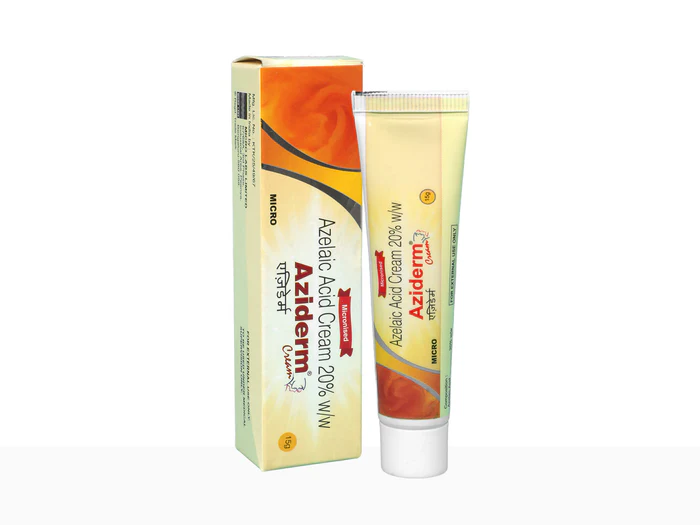
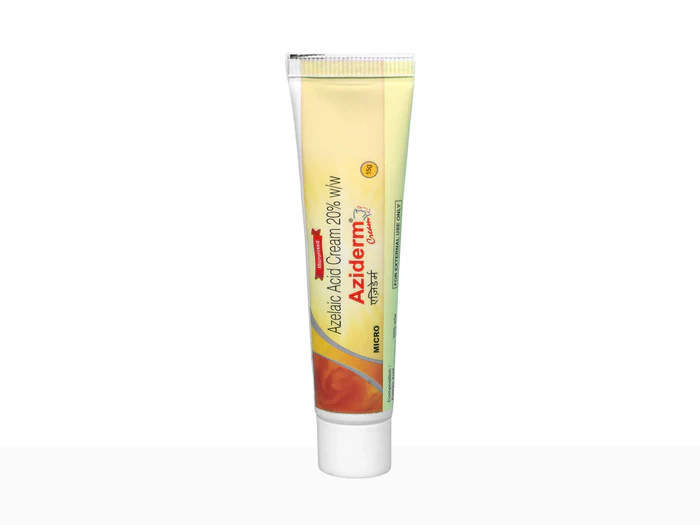
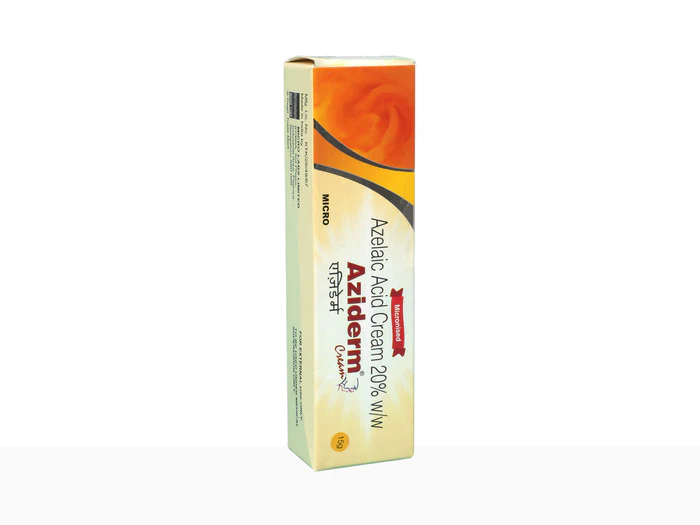
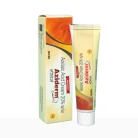
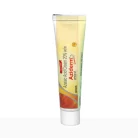
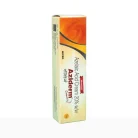
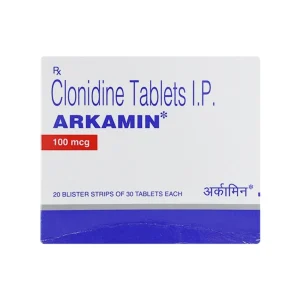
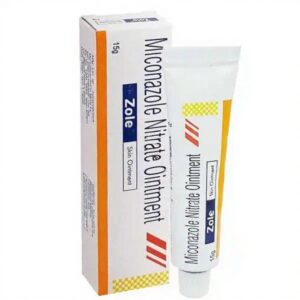
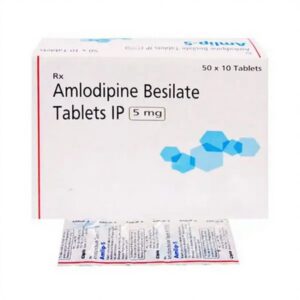
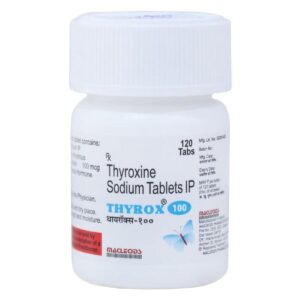
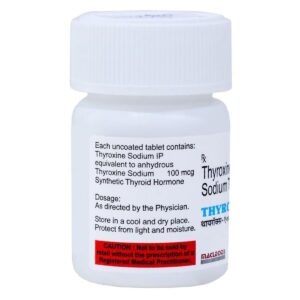
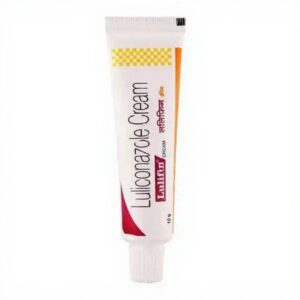
Reviews
There are no reviews yet.